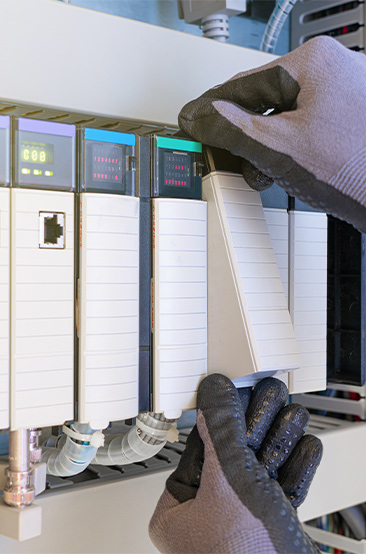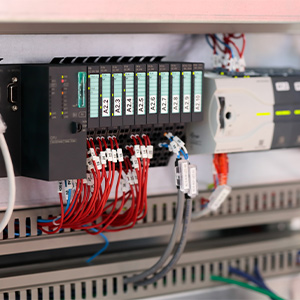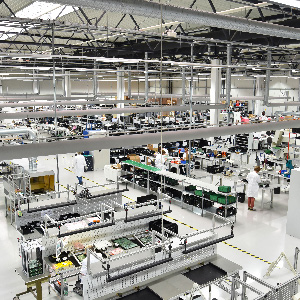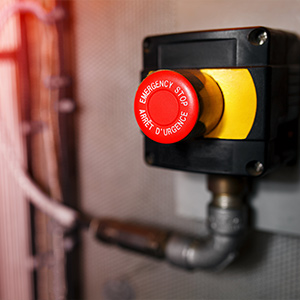Programmable Logic Controllers or more commonly known as a PLC were first introduced in 1968 when the automatic transmission division of General Motors (Hydra-Matic) issued requests for an electronic replacement for the current hard-wired relay systems. Requests for submission would be based on a white paper written by Edward R. Clark, and the winning response came from Bedford Associates.

Programmable logic controllers have seen many changes and developments since their first introduction and although the design and ruggedness have improved programmable logic controllers are still susceptible to developing faults. As PLC’s are often the brains of the machine when a fault does development, they often lead to total machine failures and can cost companies a lot of money in lost production time.
Not only is downtime extremely costly but with the advances in machine safety and the introduction of safety programmable controllers, these failures could potentially create hazardous situations for both the operator and the machine.
Programmable logic controllers often run constantly with little or no downtime for preventative maintenance or other health checks. Often contained within hot enclosures prone to extremes of temperature and dust and other contaminants, it is only through constant improvements that more faults do not develop.
Common Reasons a Programmable Logic Controller Fails
Most programmable controller faults only become known due to a sudden process stop or unexpected action or outcome. This article aims to highlight the common cause of failures in a programmable logic controller and highlight some of the steps that can be taken to minimise the possibility of a complete failure of your control system.
1. I/O Modules and Field Devices
By far the most common PLC faults involve the I/O modules failing, this type of fault usually results in a sudden stop or unexpected outcome in the process. Programmable logic controllers usually are looking for a signal to continue to the part of the program sequence, when this does not occur the program will often stop or go into a fault state.
Rectifying this type of fault is usually straightforward, however it does involve the engineer having an in-depth knowledge of the program to determine where in the program sequence it stopped, carrying out this type of fault finding is requires the program to be running, to determine which I/O module and the specific point where the fault occurred.
Once the exact fault on the I/O has been located, then the cause of the fault can be established. Common I/O module failures include:
- Loose Connection
- Tripped protection device
- Loose terminal block
- Power supply issues
- PLC configuration error
Multiple I/O failures can often indicate an error with a shared power source or internal issues within the operating programmable logic controller. If both the I/O and programmable logic controller have been ruled out as not being faulty, the next logical step would be to investigate the field devices.
2. Power Supply Issues
Power supply issues can be caused by loose connections, damaged cables and a failure to the power supply. Most programmable logic controllers are fitted with an uninterrupted power supply (UPS), this ensures that part of the machine will continue to operate for a predetermined period without power, allowing for systems to either be restarted or to power down in a controlled manner.
Sudden loss of power can result of any process data and in some cases loss of the program, to combat this most modern programmable logic controllers are fitted with its own backup battery, however, these need to be installed and checked regularly firstly. Utilising backup batteries ensures the program will restart in the position when the power was lost.
Please also remember to take regular backups of your program and store these safely and securely, if a machine had a power loss that resulted in the programmable logic controller losing power with o back up of the software this could in the machine being down for a long period.
3. Grounding Issues
Grounding or earthing issues are important to not only protecting the programmable logic controller hardware but also operators and engineers. Incorrect earthing can cause intermittent faults that are hard to diagnose.
Engineers investigating a faulty programmable logic control should firstly perform visual checks to ensure the main earth bonding is complete and has not become damaged or worked itself loose. Further checks can be completed by using a multimeter and checking the resistance from the PLC to the earth terminal.
A correctly earthed enclosure also ensures a good barrier to outside electrical noise interference.
4. Interference
Industrial environments contain a variety of electrical devices; these devices can cause electromagnetic interference (EMI) sometimes referred to as radio frequency interference (RFI).
EMI sources can be found in a variety of equipment, some of these sources include:
- Handheld radio transmitters
- Computer monitors/ televisions sitting to close to each other
- Heating elements found in ovens/ heating pads
- Electric motors
- Transformers
- Lamps and ballasts
- Power supplies
- Switching Loads (Resistive, inductive and capacitive)
Controlling the effects of EMI should be a priority for every company, as EMI issues can cause unusual behaviour and intermittent faults and even PLC failure.
Most electrical noise issues can be designed out of a system or machine through good design. Relocating sensitive equipment, earthing/ grounding, using shielded cables, segregating systems and cabling and adding EMI barriers are always to reduce the chances of EMI interference.
5. Network Communications
Programmable logic controllers are utilised to communicate to other devices such as drives, HMI and other intelligent equipment. Various communication protocols are used for industrial communication networks in factories and a failure in these networks can cause immediate downtime.
Good engineering practice can often protect against communication network failures; correctly terminated and installed connectors, correctly installed cables and ensuring devices used are fit for purpose, and any firmware patches installed are secure and updated.
6. Heat and Humidity
The ambient environment of components should be observed as fluctuations in temperature can cause equipment to fail. Equipment is susceptible to failure when exposed to high temperatures or humidity.
Programmable logic controllers exposed to a high temperature above the recommended manufacturers data can cause premature failure. Failure in cooling units or fans can cause insufficient airflow and cooling that can lead to an increase in the ambient temperature.
Humidity in an enclosure can result in condensation occurring on electrical components.
Steps can be taken to prevent the effects of heat and humidity especially when components are located in an enclosure, cooling fans and air conditioning units are readily available for ensuring the correct air temperature and can be fitted during the design stage or retrofitted to existing enclosures.
Preventing the risks of PLC failure
Companies can reduce their chances of experiencing a programmable logic controller failure by following engineering best practices; ensuring equipment is suitable and installed correctly.
Companies who operate a preventative maintenance process should ensure checks include;
- Overheating or electrical noise
- Checking and testing UPS batteries
- Check wiring connectors are terminated correctly and have no signs of damage
- Ensure any earthing is installed and correctly terminated
- Ensure backup software is up to date and install firmware patches
With manufacturers of programmable logic controllers continuing to improve and innovate their product ranges. Often equipment is being operated with PLC’s that are no longer current and not available for spares or replacement from the manufacturers. Ensuring that spares are available for old components can ensure that any downtime from a failure can be rectified quickly and efficiently.




